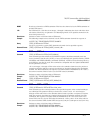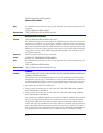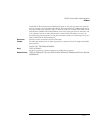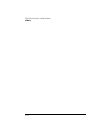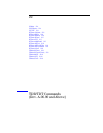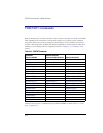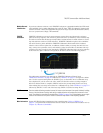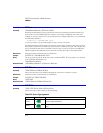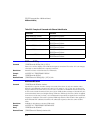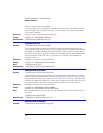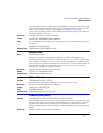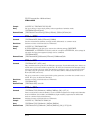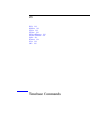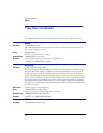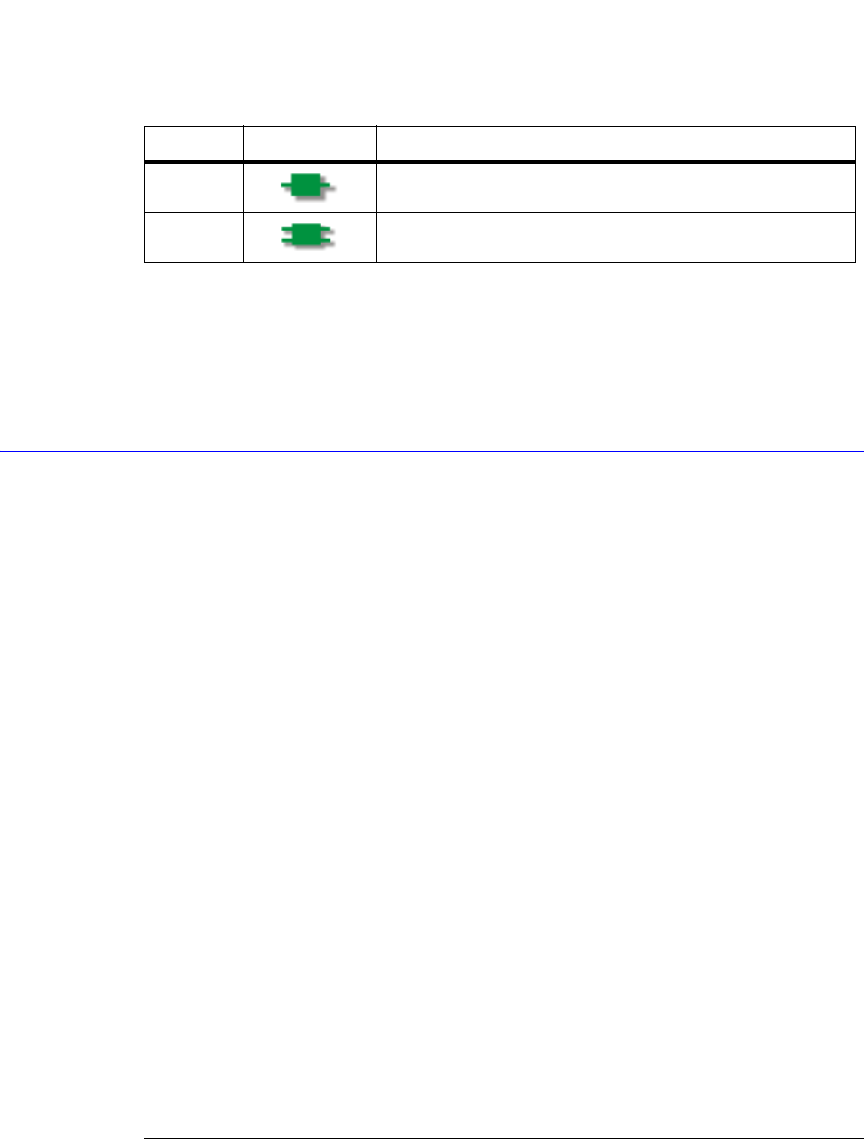
22-5
TDR/TDT Commands (Rev. A.06.00 and Above)
RESPonse:CALibrate
Restrictions Software revision A.06.00 and above. TDR mode.
Example 10 OUTPUT 707;":TDR:DUT:TYPE D1PORT"
Query The query returns only the short form of the command. For example D1P, D2P, D2PT, or D4P.
The long form is not returned even if :SYSTem:LONGform is on.
:TDR:DUT:TYPE?
Returned Format [:TDR:DUT:TYPE] {D1Port | D2Port | D2PThru | D4Port}<NL>
RESPonse:CALibrate
Command :TDR:RESPonse<N>:CALibrate
Initiates a TDR/TDT channel calibration. Setup the horizontal scale and position to view the
test device on the display before starting a calibration. The argument <N> is an integer, 1
through 4, that identifies the channel to be calibrated. For TDR measurements, it is the
channel that is the source of the TDR step pulse. For TDT measurements, it is the channel
that receives the step pulse. For differential and common-mode measurements, you specify
either channel of the pair to calibrate both paths. Refer to Table 22-3 on page 22-6 for several
examples. Failure of a calibration step results in that step being repeated. Refer to “TDR/TDT
Calibration” on page 22-3 for more information.
Send the query “SDONe?” on page 7-9 to determine when a calibration step has completed. If
you set a time out value, make sure that the value is set long enough to allow the measure-
ment to complete. SDONe? returns the prompt string for the next step. After making the test
setup connections for a calibration step, send “CONTinue” on page 7-4 followed by SDONe?.
At the end of the last step, SDONe? returns the string “Done”.
Restrictions Software revision A.06.00 and above. TDR mode.
Example 10 OUTPUT 707;":TDR:RESPONSE1:CALIBRATE"
D2PThru Two-port device. Single-ended input, single-ended output.
D4Port
Four-port single-ended device. Or, two port differential/common mode
input.
Table 22-2. Device Type Arguments
Argument Device Type Description



